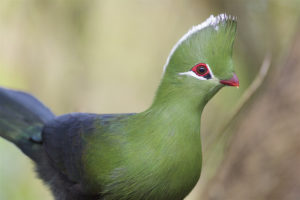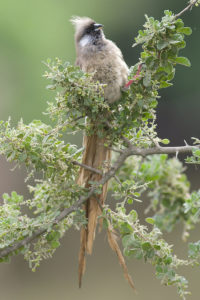
As many birdwatchers know, the best way to see an impressive number of avian species is to take a trip to the Southern Hemisphere. En route to encountering a record-setting 6,042 bird species in 2015, intrepid birdwatcher Noah Strycker spent three full months in South America (sometimes referred to as the Bird Continent), but only twelve days in Europe.
This is not to say that European birds are any less interesting than those found at more southerly latitudes; it simply reflects the strikingly uneven global distribution of the world’s 11,000 living bird species.
Many major groups of birds are entirely restricted to South America, Africa, and Australasia
Not only are species numbers higher in the Southern Hemisphere, but many major groups of birds are entirely restricted to South America, Africa, and Australasia – all vestiges of the ancient southern supercontinent of Gondwana.
But how did this uneven geographic distribution of living bird diversity arise? Does it simply reflect the fact that most groups of living birds arose on the southern continents, and failed to disperse elsewhere? Or have more complex patterns governed the evolutionary history of avian geographic distributions through geological time?

The only way to definitively answer this question is to flesh out the fossil record of modern birds. In our new study, just published in BMC Evolutionary Biology, we examined a beautifully preserved 52-million-year-old fossil bird named Foro panarium. Originally discovered in western North America in the 1980’s, and named in the 1990’s, F. panarium exhibits an enigmatic mix of anatomical features that has prevented a robust assessment of its affinities.
By re-examining its anatomical features in an updated evolutionary context, our work supports Foro panarium as the earliest known relative of a group of living birds called turacos, or “banana eaters”. Turacos are an outrageously beautiful group of ~24 species of medium-sized fruit-eating birds, and the feathers of several species contain unique pigments that generate bright green and magenta tones. In addition to these interesting aesthetic attributes, modern turacos are also known for being entirely restricted to sub-Saharan Africa.
But if the fossil, Foro panarium, hails from North America, what does that tell us about the ancient geographic distribution of the group that gave rise to modern turacos? And how did modern turacos become restricted to Africa in the modern day?
It turns out that Foro panarium is far from the first example of a fossil bird being found outside the modern distribution of its closest living relatives. Many other groups of birds that today are restricted to southern landmasses, such as the seriemas of South America , or the mousebirds of Africa, have fossil representatives known from entirely different parts of the world.

Our paper reaffirms the complexity such observations can introduce into analyses focused on discerning ancestral geographic distributions of modern birds (please see refs 1, 2 and 3). While our analyses examining only modern birds confidently infer that the most recent common ancestor of all living birds arose in the Southern Hemisphere, our analyses which incorporate fossils return a decidedly less certain result.
These analyses tell us that either modern birds did not arise in the Southern Hemisphere, or, if they did, that subsequent fluctuations in the geographic distributions of modern birds have been vastly more complex than we could understand without the fossil record.
Future work will attempt to more clearly discern the major factors driving the dramatic shifts in geographic range documented by the fossil record. Are these ancient episodes of inferred dispersal related to periods of climatic change throughout Earth history? Or were they perhaps related to periodic extinction events throughout geological time?
Beyond the implications for understanding the geographic history of the lineage including turacos, Foro panarium sheds additional light on the age of the turaco lineage itself. The age of the fossil makes F. panarium not only the oldest-known representative of the turaco lineage, but the oldest representative of the major group that includes turacos, cuckoos, and bustards (which are large, ground-dwelling birds).
Thus, turacos must have diverged from their closest living relatives by at least 52 million years ago, which may suggest that this group was part of a rapid avian radiation in the aftermath of the end-Cretaceous mass extinction event, 66 million years ago (that famously wiped out the giant dinosaurs).
Many living birds that are strictly tree-dwelling have relatively short hindlimbs, a specialization that lowers their centre of mass for enhanced perching stability.
Foro panarium also provides interesting insights into the evolution of modern turaco biology. Many living birds that are strictly tree-dwelling have relatively short hindlimbs, a specialization that lowers their centre of mass for enhanced perching stability.
This is the case for living turacos, which are both tree-dwelling and exhibit relatively short hindlimbs. However, the hindlimbs of F. panarium are quite long, similar to living ground-dwelling birds. This observation may point to the relatively late acquisition of arboreality among the ancestors of turacos—consistent with the idea that a tree-dwelling lifestyle arose independently numerous times among living birds following the forest-destroying end-Cretaceous extinction event.
The multifaceted insights yielded by Foro panarium illustrate the profound importance of the fossil record for accurately understanding the evolutionary history of modern birds. Clearly, a better understanding of the evolutionary affinities of modern bird fossils has the potential to radically improve our understanding of how and when modern birds, and their characteristic geographic distributions, evolved. Our picture of bird evolutionary history will continue to grow sharper as each new bird fossil gets unearthed … not unlike adjusting the focus on a distant turaco through binoculars.
Interesting read
very informative
the conclusion for secular scientists here is that…similar, future discoveries of more fossils will help provide more answers…while this discovery seems to cause for more questioning. The conclusion for creationists and world wide flood is….just another piece of evidence for the truth about history and the Bible. God created science too.